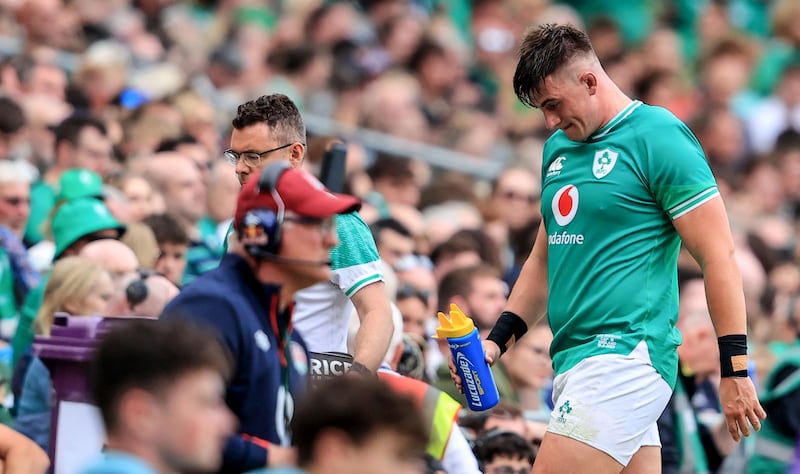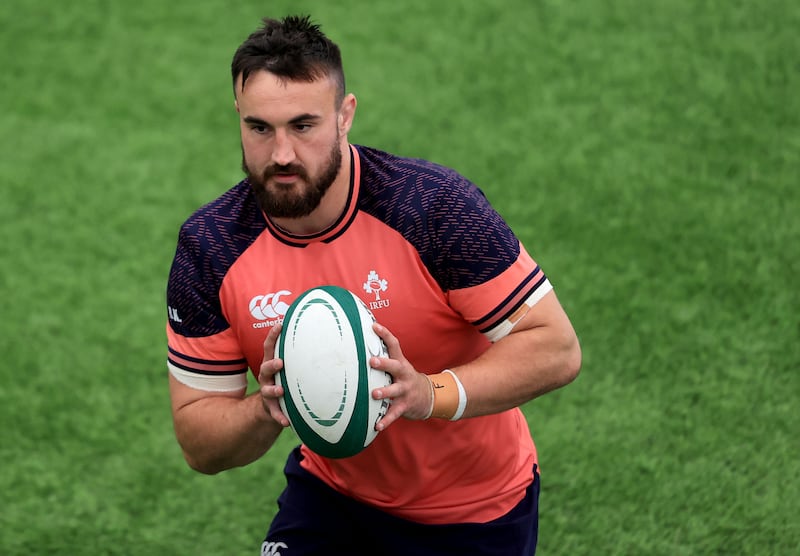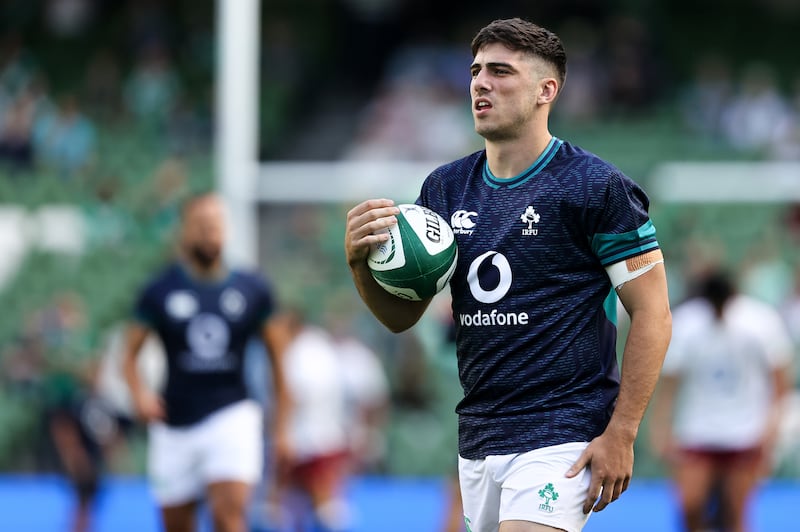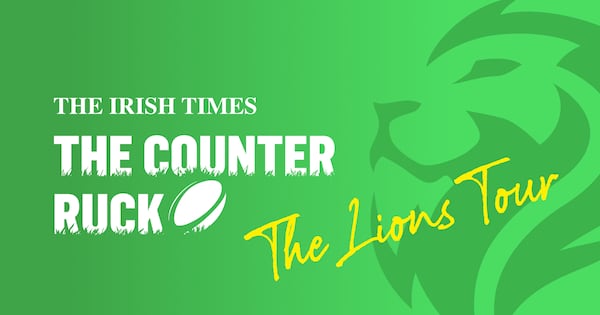It says much about the settled and – touch wood – healthy nature of the Irish squad that when Andy Farrell announces the make-up of the 33-man panel for the World Cup on Sunday afternoon, it does not appear nearly as unpredictable or as likely to contain surprises as some of their rivals.
The starting point is whether Farrell and his coaching ticket opt for an 18-15 or 19-14 split. For each of the last two World Cups, when restricted to 31-man squads, Joe Schmidt opted for 17-14 splits. That was generally more in vogue too.
Several nations, such as England and South Africa have given the extra two places to forwards in 19-14 splits, whereas the All Blacks went with a more classical 18-15, thereby affording themselves an additional forward and an extra back compared to four years ago.
While Farrell said management’s thinking may yet be swayed by unexpected developments over the weekend, he’s also said they have been consistent in their own thinking all along.
“We’re pretty clear on what we want because of what we want for our group but having said that, what happens in the next few days – if a player drops out or comes down that’s a player that covers one position, or a player that covers three or four different positions – that could change your mind.
“Everyone’s different because it’s whatever fits for the personnel that they’ve got, and we’re pretty clear on that front from a while back.”
At a guess therefore, that perhaps indicates Farrell and co favour an 18-15 split, thereby accommodating one more forward and back apiece.
The Irish head coach and his assistants have never veered away from the more classical and traditional 5-3 split on the bench and a squad comprising 18 forwards and 15 backs would be in keeping with that approach of not over-thinking things or trying to be too clever.
This would still allow them to cover all specialist positions with three players each – ie loose-heads, hookers, tightheads, scrumhalves and outhalves, while allowing for a modicum of versatility therein – so leaving them with the choice of nine or 10 back-five forwards, and nine or eight midfielders/outside backs. And that 18/15 split would mean nine back-five forwards and nine backs, which is less lopsided than 19/14.
While they are in the pool of sharks a helpful schedule, that sees Ireland start off against Romania and Tonga before facing South Africa and Scotland, affords the Ireland coaches more scope to name Dan Sheehan on Monday, even if he was only to be fit in time for the third game.
If Ireland are to win the World Cup, it’s a dice worth rolling with the world-class Sheehan.

In addition, of course, Ronan Kelleher has been unable to play in any of the warm-up games due to a hamstring twinge but Farrell has said had it been a World Cup semi-final or final, the hooker could have been pushed into playing.
Taken at face value then, the established first choice trio of Sheehan, Kelleher and Rob Herring look the likely picks, unless Tom Stewart has a proverbial stormer against Samoa to jolt the coaches’ thinking. Either way, his selection to start against Samoa is a further investment in the once-capped 22-year-old should he be called up at any stage.
Cian Healy’s ability to scrummage at hooker also affords Farrell and co more elbow room, and confirmation that the scrumhalves have been practising lineout throwing in addition to Josh van der Flier, further suggests they are not inclined to pick four hookers.
Similarly, presuming David Kilcoyne is fit for the start of the tournament, then he looks like being included above Jeremy Loughman given he played only eight minutes last week and is on the bench again.
The three tight-heads appear cast in stone, as do James Ryan, Tadhg Beirne, Iain Henderson and now even Joe McCarthy, as well as backrowers Peter O’Mahony, Caelan Doris, Josh van der Flier and Jack Conan, again presuming the latter recovers from his foot injury.
With an 18-15 split, that would leave one place between Ryan Baird and Cian Prendergast. The latter’s selection at No 8 against England is a clear indication that he is under serious consideration, but then again Baird starts again at blindside against Samoa, as he did against Italy.
As a lock who can play with equal facility at blindside, Baird does look the likelier option, although a big performance in keeping with his display against Italy would seal the deal.

Prendergast is possibly even more versatile, and Farrell loves his “warrior spirit”, but in the heel of the hunt, it’s just hard to believe that there won’t be a need for such an exceptional Malcolm O’Kelly-like athlete as Baird.
Whereas Schmidt created elbow room by twice opting for just two scrumhalves, with Ian Madigan and Joey Carbery in turn providing cover, Farrell can accommodate a third specialist ‘9′ in Craig Casey.
Jack Crowley’s class and selection for a third warm-up game strongly points to him being included for his first World Cup.
So, while the five-times capped 23-year-old has been restricted to about 51 of his near 160 minutes on the pitch to his favoured outhalf role, time at inside centre and fullback has had its benefits too.
“The way that we play is quite fluid and flexible, and being able to play within that system no matter where you are, you’ve still got to make decisions and you’ve still got to do the right things. The responsibility is still the same,” he said.
It will be fitting for Crowley to play his first World Cup in France. Although he has more vivid rugby memories from the 2011 tournament in New Zealand, in another respect the 2007 tournament in France, when he was an impressionable six-year-old, left a mark too.
“I think I wanted a French kit,” he says, laughing. “I wanted the French kit, the away one, it was just something I remember writing down, France and New Zealand, and watching the two away kits. And I got neither! I got an Irish kit, so Santa was obviously trying to say something. But that was probably the first one [memory].”
Furthermore, for his first two years on the Bandon Grammar School senior cup team when he moved from scrumhalf to outhalf, Crowley came under the influence of French coach Régis Sonnes, who is now back in Bandon with club and school after his time with Toulouse and Agen.
“His famous saying was ‘why not’ when you look for a tap from your own five in a senior cup quarter-final,” recalls Crowley with a broad smile. “He’s saying: ‘Why not? Do it’ And you look at him laughing. Yeah, he’s a great character and a great insight into the game and I suppose from a different perspective as well. It’s great to have him back in the area because he did so much for rugby.”

Crowley was tearing it up with the Irish Under-20s when the Covid pandemic arrived and sidelined him in some prime development years without even the AIL to provide an outlet with Cork Con.
But typical of a mature young man, he has a balanced take on that period.
“At the time there were a lot of people who had illnesses, there were higher priorities and things more important,” he says, besides which he believes the provinces were inventive in making the most of players’ time away from the pitch.
Crowley says the then Ireland under-20s coach Noel McNamara was “a massive influence on me”, and his introduction to the Munster academy also exposed him to the province’s senior squad, as well as the tutelage of Stephen Larkham.
“He was pivotal for me as well, taking me under his arm and helping me for the last two years.”
In yet another French connection, Crowley certainly has no regrets now about not taking up an offer in 2020 from Ronan O’Gara to join La Rochelle, tempting as it was from a fellow Cork Con and Munster outhalf, and boyhood idol.
“Fortunately, then I got game time with Con and then I got game time with Munster, making my debut that Christmas. Look, it was an opportunity, but I wouldn’t change it for what I’ve done recently. That’s ‘dreams come true’ stuff.”
Elsewhere, where Farrell could create some space for himself would be to have Keith Earls and Jimmy O’Brien cover midfield, and thus opt for three centres, with Stuart McCloskey missing out.
But the very fact that McCloskey is playing his eighth Test in Ireland’s last dozen matches underlines the toll on the Irish midfield since the indestructible Gordon D’Arcy/Brian O’Driscoll era, and four centres were included four years ago.
Presumably, the versatility of Earls and O’Brien will see them both included. The former’s third selection in three warm-up games, and the deep respect with which he is held by coaches and team-mates alike, points to Ireland’s all-time record World Cup try-scorer going to his fourth tournament, all the more so as Jacob Stockdale hasn’t featured since the Italian game.
O’Brien was restricted to the first half in that game, and is restored at fullback, an indication that he needs a strong performance in Bayonne today to ensure his inclusion in a first World Cup, but is in pole position to do so.
Come the final permutations, it’s hard not to believe that O’Brien’s versatility – he is the squad’s nearest thing to a Swiss army knife – and left boot won’t be required.
But in all of this, naturally, the best laid plans of mice an men can be undermined at the last, but hopefully there are no unexpected developments or injuries for either team today.
The more predictable this squad announcement is the better.
Possible 33-man Irish World Cup squad
Forwards (18)
Hookers: Rob Herring (Ulster/Ballynahinch), Ronan Kelleher (Leinster/Lansdowne), Dan Sheehan (Leinster/Lansdowne)
Props: Finlay Bealham (Connacht/Buccaneers), Tadhg Furlong (Leinster/Clontarf), Cian Healy (Leinster/Clontarf), Dave Kilcoyne (Munster/UL Bohemians), Tom O’Toole (Ulster/Ballynahinch), Andrew Porter (Leinster/UCD).
Locks: Ryan Baird (Leinster/Dublin University), Tadhg Beirne (Munster/Lansdowne), Iain Henderson (Ulster/Academy), Joe McCarthy (Leinster/Dublin University), James Ryan (Leinster/UCD).
Backrows: Jack Conan (Leinster/Old Belvedere), Caelan Doris (Leinster/St Mary’s College), Peter O’Mahony (Munster/Cork Constitution), Josh van der Flier (Leinster/UCD).
Backs (15)
Scrumhalves: Craig Casey (Munster/Shannon), Jamison Gibson-Park (Leinster), Conor Murray (Munster/Garryowen).
Outhalves: Ross Byrne (Leinster/UCD), Jack Crowley (Munster/Cork Constitution), Jonathan Sexton (Leinster/St Mary’s College).
Centres: Bundee Aki (Connacht/Galwegians), Robbie Henshaw (Leinster/Buccaneers), Stuart McCloskey (Ulster/Bangor), Garry Ringrose (Leinster/UCD).
Outside backs: Keith Earls (Munster/Young Munster), Mack Hansen (Connacht/Corinthians), Hugo Keenan (Leinster/UCD), James Lowe (Leinster), Jimmy O’Brien (Leinster/Naas).














